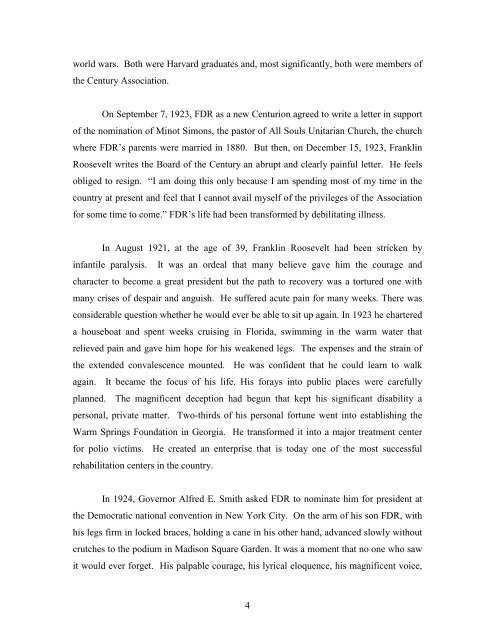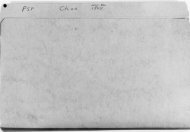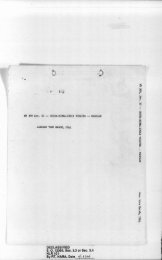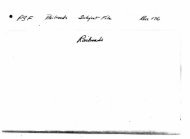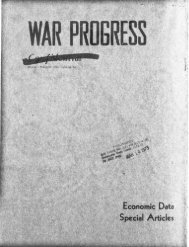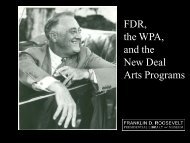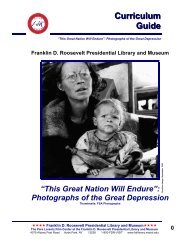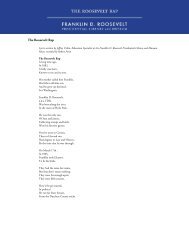Franklin Delano Roosevelt A Man of the Century
Franklin Delano Roosevelt A Man of the Century
Franklin Delano Roosevelt A Man of the Century
Create successful ePaper yourself
Turn your PDF publications into a flip-book with our unique Google optimized e-Paper software.
world wars. Both were Harvard graduates and, most significantly, both were members <strong>of</strong><br />
<strong>the</strong> <strong>Century</strong> Association.<br />
On September 7, 1923, FDR as a new Centurion agreed to write a letter in support<br />
<strong>of</strong> <strong>the</strong> nomination <strong>of</strong> Minot Simons, <strong>the</strong> pastor <strong>of</strong> All Souls Unitarian Church, <strong>the</strong> church<br />
where FDR’s parents were married in 1880. But <strong>the</strong>n, on December 15, 1923, <strong>Franklin</strong><br />
<strong>Roosevelt</strong> writes <strong>the</strong> Board <strong>of</strong> <strong>the</strong> <strong>Century</strong> an abrupt and clearly painful letter. He feels<br />
obliged to resign. “I am doing this only because I am spending most <strong>of</strong> my time in <strong>the</strong><br />
country at present and feel that I cannot avail myself <strong>of</strong> <strong>the</strong> privileges <strong>of</strong> <strong>the</strong> Association<br />
for some time to come.” FDR’s life had been transformed by debilitating illness.<br />
In August 1921, at <strong>the</strong> age <strong>of</strong> 39, <strong>Franklin</strong> <strong>Roosevelt</strong> had been stricken by<br />
infantile paralysis. It was an ordeal that many believe gave him <strong>the</strong> courage and<br />
character to become a great president but <strong>the</strong> path to recovery was a tortured one with<br />
many crises <strong>of</strong> despair and anguish. He suffered acute pain for many weeks. There was<br />
considerable question whe<strong>the</strong>r he would ever be able to sit up again. In 1923 he chartered<br />
a houseboat and spent weeks cruising in Florida, swimming in <strong>the</strong> warm water that<br />
relieved pain and gave him hope for his weakened legs. The expenses and <strong>the</strong> strain <strong>of</strong><br />
<strong>the</strong> extended convalescence mounted. He was confident that he could learn to walk<br />
again. It became <strong>the</strong> focus <strong>of</strong> his life. His forays into public places were carefully<br />
planned. The magnificent deception had begun that kept his significant disability a<br />
personal, private matter. Two-thirds <strong>of</strong> his personal fortune went into establishing <strong>the</strong><br />
Warm Springs Foundation in Georgia. He transformed it into a major treatment center<br />
for polio victims. He created an enterprise that is today one <strong>of</strong> <strong>the</strong> most successful<br />
rehabilitation centers in <strong>the</strong> country.<br />
In 1924, Governor Alfred E. Smith asked FDR to nominate him for president at<br />
<strong>the</strong> Democratic national convention in New York City. On <strong>the</strong> arm <strong>of</strong> his son FDR, with<br />
his legs firm in locked braces, holding a cane in his o<strong>the</strong>r hand, advanced slowly without<br />
crutches to <strong>the</strong> podium in Madison Square Garden. It was a moment that no one who saw<br />
it would ever forget. His palpable courage, his lyrical eloquence, his magnificent voice,<br />
4


